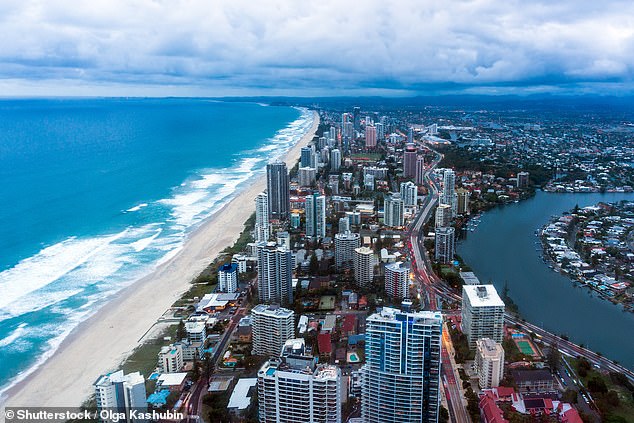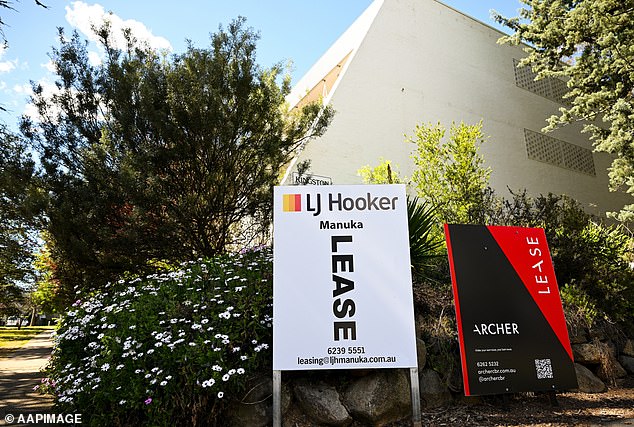Desperate act Queensland mother-of-three has been forced to take after she was rejected from 150 rentals
A Queensland mother of three is devastated after she was turned down for 150 rental properties, forcing her to move to another state to live with her mother.
Single mother Zoe Somers rented a property in Pimpama, a rural town on the Pacific Motorway between Brisbane and the Gold Coast, early last year.
Ms Somers was forced to move when her rent rose 30 per cent from $460 to $590 a week.
She explained that the first increase came when she and her husband were living together and the couple managed to pay the difference.
The couple subsequently separated and the rent was increased again to $680 a week, leaving Ms Somers unable to make the payments while also caring for her two-year-old son and two teenage daughters alone.
Single mother-of-three Zoe Somers (pictured) was forced to move from the Gold Coast after 150 rental applications were rejected
Ms. Somers applied for about 150 homes between March and December in a number of suburbs within driving distance of her daughter’s school, which she attends for the specialized Japanese language program.
Ms Somers even considered renting two hours away in Brisbane and letting her daughter take the train to school.
The young mother also faced a severe childcare shortage and accepted government assistance after leaving work to care for her son.
After 10 months of failed job applications, Ms Somers had no choice but to leave the Gold Coast and live with her mother in Tasmania.
Ms Somers said she was overwhelmed with sadness over the rental crisis and claimed the housing crisis is ‘the reason why people become homeless’.
“I cried a lot, mainly because I didn’t want to renew my lease when I knew my rent was going up and I tried to talk to my landlord… she knew the situation… and she increased it anyway,” Ms. Somers said Nine.
‘Not only are rental properties hard to find on the Gold Coast, but so is childcare, and that’s how I became a single parent – not because I wanted to. People’s situation changes in one fell swoop; that’s how people become homeless.’

Ms Somers was forced to move from the Gold Coast (pictured) to live with her mother in Tasmania
Ms Somers, who is now employed, is still applying for rental properties in Launceston and claims the housing crisis is “not much easier” in Tasmania.
“Even if I find a place to rent for myself, I don’t know how to do it because my whole life with kids it was a two-parent household,” she said.
‘It doesn’t seem much easier to find a rental property here as a single parent, but at least I have the support of my family.’
The average asking rent in Pimpama has increased by nine percent in a twelve-month period and by 52 percent in five years, according to online real estate site Domain.
Meanwhile, the national vacancy rate fell from 1.1 percent in January to 0.7 percent in February.
According to SQM Research, the total number of rental vacancies across Australia in January was 32,108.
Vacancy rates in Sydney and Melbourne fell to 1.3 percent and 1.1 percent respectively, Canberra and Darwin fell to 1.7 percent and Brisbane and Hobart had vacancy rates of one percent.
Meanwhile, vacancy rates in Perth and Adelaide were below 1 per cent in January.
In the thirty days to February 14, 2024, asking rents in the capital rose by a further 1.4 percent.

The national vacancy rate fell from 1.1 percent in January to 0.7 percent in February
The national average weekly rental price for a home is $614.54 per week.
Sydney recorded the highest weekly rent for a house at $1,037.08 per week, while units in Adelaide offered the best rental price of any capital city at $451.20 per week.
Managing Director of SQM Research Louis Christopher said national rents in almost all regions showed no end in sight to the rental crisis before early 2024.
“Our rental market update shows a sharp decline in rental property vacancies across the country,” Christopher said.
‘It is a seasonal increase in demand that we see every year at the beginning of the year, but which is certainly problematic because the current rental market is still in crisis.
‘Going forward, our best-case scenario for renters is that population growth slows significantly this year to an increase of around 360,000 people, which would likely mean a stabilization of rental prices from the June quarter onwards.
The worst case is that the population continues to grow at the current rate.’
